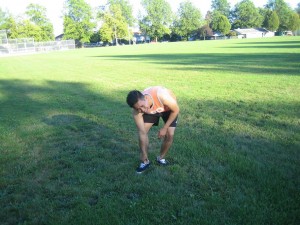Athlete’s foot is the most common fungal infection that causes rashes on the skin of the foot. Athlete’s foot can be caused by a fungus that grows on the top layer of the skin. They grow best in warm, wet areas between the toes. They can be spread easily, by getting in contact with the infected feet of a person. A person can also get this kind of infection by walking barefooted on soiled surfaces near swimming pools. The fungi grow inside the footwear, especially if they are tight fitting and air cannot circulation around the feet. Athlete’s foot can cause the skin to peel and crack.
[youtube url=”https://www.youtube.com/watch?v=tCksWa8j-IM” width=”220″]Athlete’s foot can be caused by the two types of fungus
- Trichophyton mentagrophytes causes toe webbing or vesicular which is a blister-like infection; they can be severe but can be easily treated.
- Trichophytone rubrum causes a moccasin-type of infection. This condition is chronic that last for a long time and is difficult to cure.
If a person come in contact with the fungi that cause athlete’s foot, it can be spread to other people, whether the person got infected or not.
A symptom of the athlete’s foot varies from person to person, some people have severe discomfort, while other will have only few or even have no symptoms at all. There are some common symptoms

- The feet are peeling, cracking and scaling.
- There is redness, blisters or maceration of the skin.
- There is itching and burning sensations.
Treatment and home remedies for athlete’s foot
- Athlete’s foot can be treated at home with basic first aid using a non-prescription medicine and taking care of the feet like clotrimazole, miconazole, terbinafine and tolnaftate. These medications are available as creams, lotion, solution gels, sprays, and ointment that last from 1-6 weeks.
- If the person has a vesicular infections, soak the foot in Burrow’s solution for several times a day for 3 or more days until the blisters disappears. Then apply antifungal creams. Burrow’s solution can be used as compresses to the athlete’s foot.
- Seek medical help if – there is a severe cracking, scaling, and peeling of skin, presence of blisters on the feet, there are red streaks spreading from the infected area, pus discharges, a fever or 100 degrees F (37.8 degrees C) or higher and the symptoms does not improve after 2 weeks.
Athlete’s foot can be prevented by
- Keeping the foot properly clean and dry all the time.
- Properly dry your toes after swimming or bathing.
- When indoors, wear socks without shoes
- Wearing shoes or sandals that allows the feet to breathe, there is air circulating around the shoes or sandals
- Using talcum powder or any antifungal powder for the feet.
- Wearing socks that absorb sweat, and changing socks twice a day.
- Air the shoes or sandals at about 24 hours prior to wearing them
- Encourage the individual to use shower sandals in public pools and showers.
